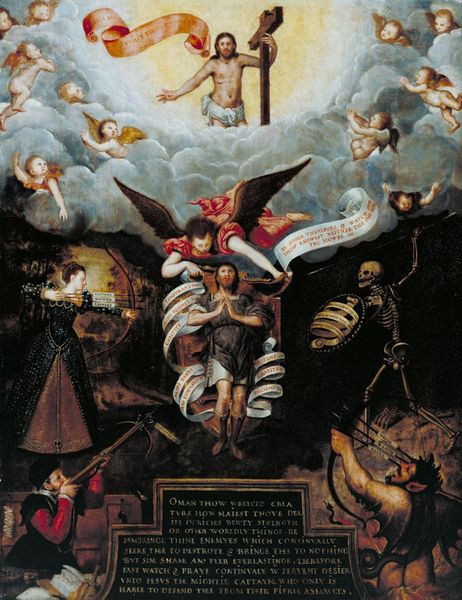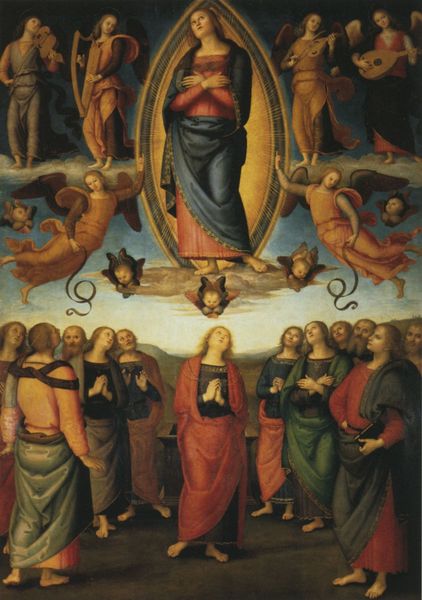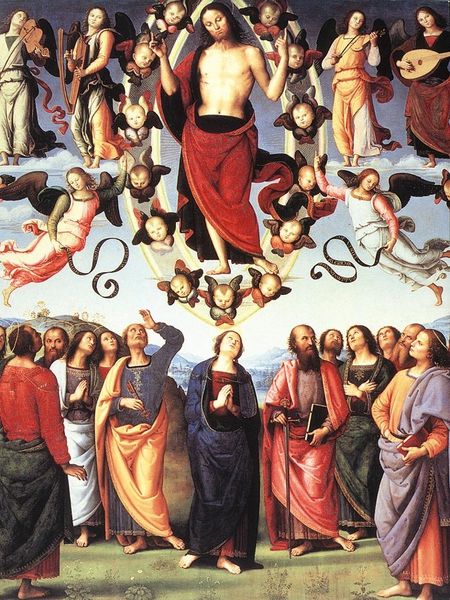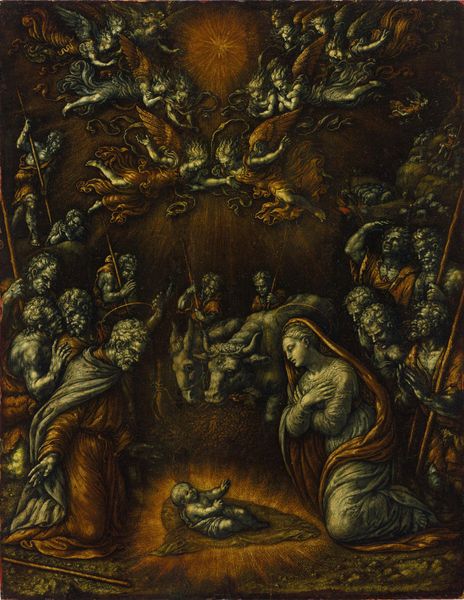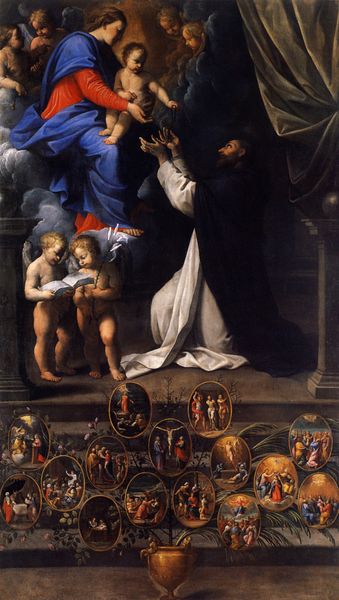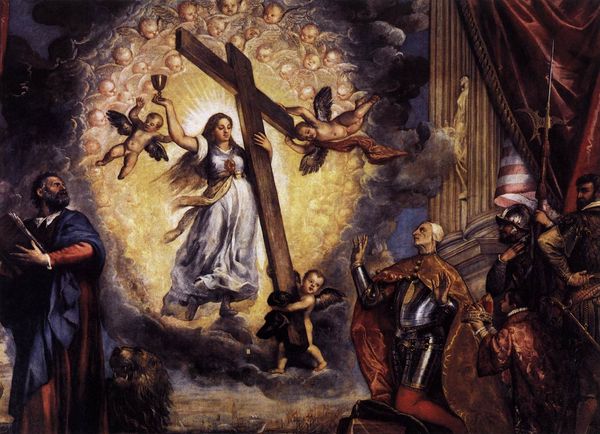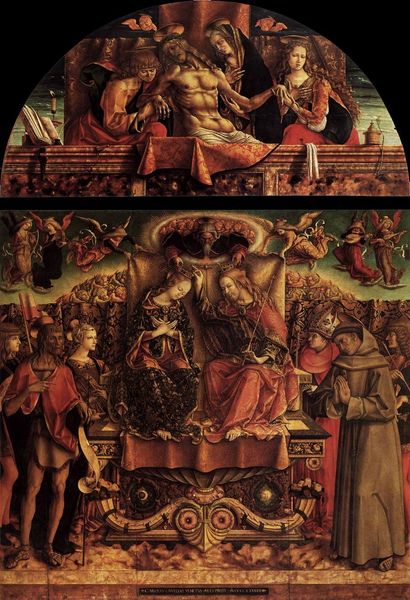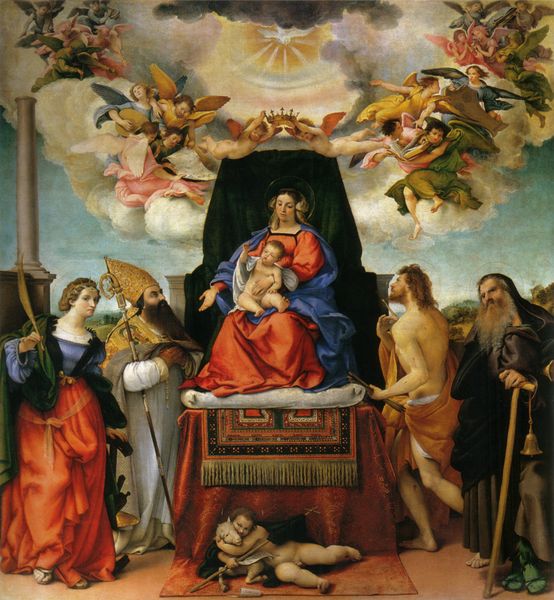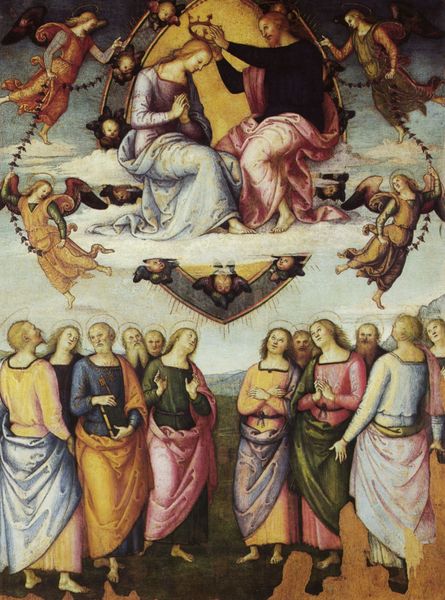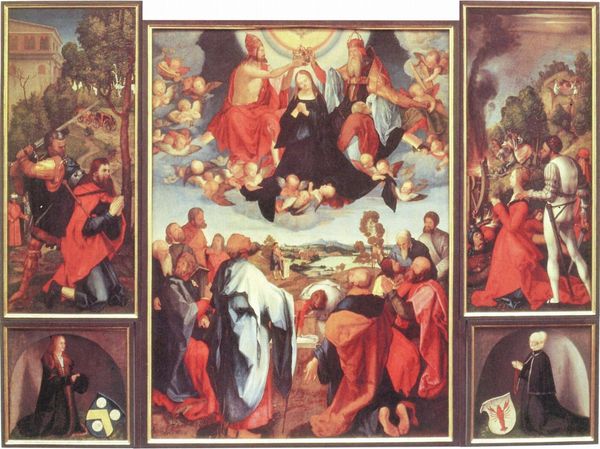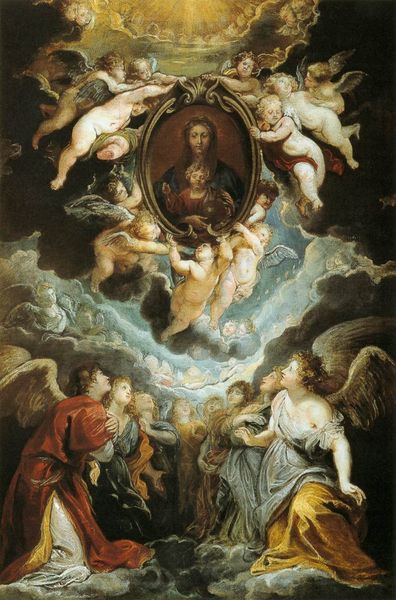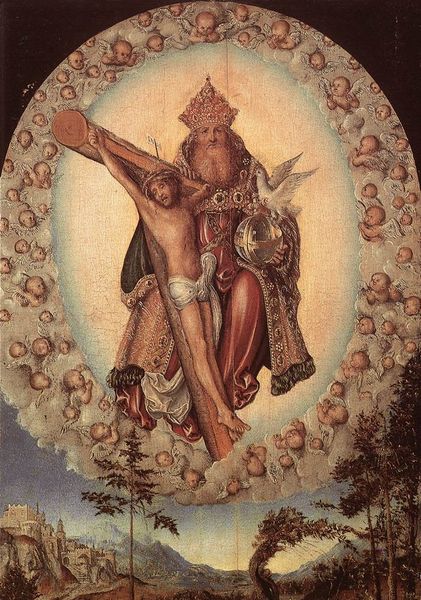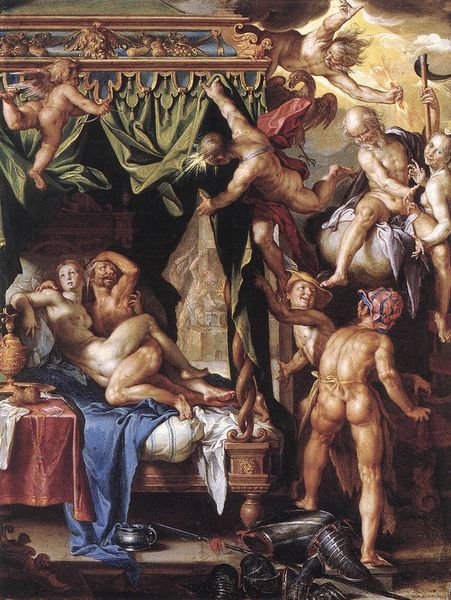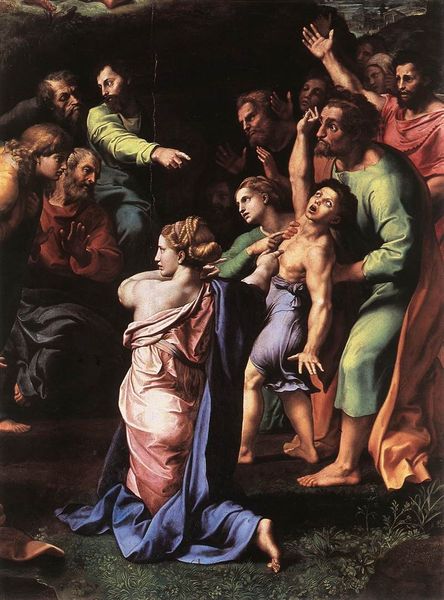
painting, oil-paint
#
portrait
#
allegory
#
painting
#
oil-paint
#
figuration
#
11_renaissance
#
christianity
#
history-painting
#
northern-renaissance
#
christ
Copyright: Public domain
Editor: Lucas Cranach the Elder's "The Trinity," created around 1515, uses oil paint to depict a rather striking vision. It’s full of symbolism and what seems to me like a somewhat somber, yet glorious, scene. What draws your eye when you look at this work? Curator: The feeling you pick up on is spot-on, it's definitely supposed to evoke that complex blend of sorrow and triumph that’s so central to the Christian narrative. The real magic for me lies in how Cranach manages to capture this theological concept – the Trinity – visually. It’s not just a portrait; it’s an idea painted onto wood. I think the faces of everyone at the bottom of the frame are really incredible, because they are looking at you, too. Do they represent all who gaze upon the crucified christ? And does God the Father, by contrast, look away from our suffering? Editor: That’s fascinating! I hadn't considered the direct gaze. The swirling mass of cherubs definitely caught my attention. There are just so many of them, crammed into the composition! It gives the scene a very… unique feel. Curator: Yes, I'd say their sheer volume is overwhelming – the crowd feels ecstatic and yet kind of mournful all at once, doesn't it? Cranach cleverly uses them to almost create a visual barrier between the divine and the earthly, adding to that sense of both glory and isolation you picked up on earlier. Editor: It really puts the theological concepts into perspective, doesn’t it? Seeing the Holy Spirit, Christ, and God presented together... It makes me think about how artists grapple with the invisible and try to give it form. Curator: Exactly! Cranach is wrestling with the impossible – and making something deeply moving in the process. It also challenges our own interpretation; are we the supplicants, the comforted, or something else? Editor: This has given me a totally different view. I am ready to explore more of Cranach's narrative paintings now.
Comments
No comments
Be the first to comment and join the conversation on the ultimate creative platform.
